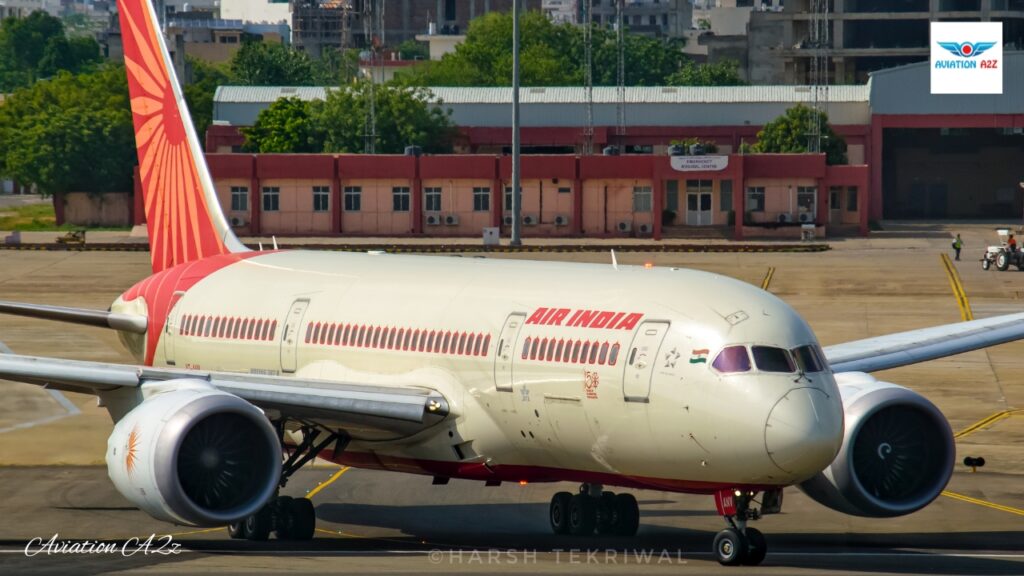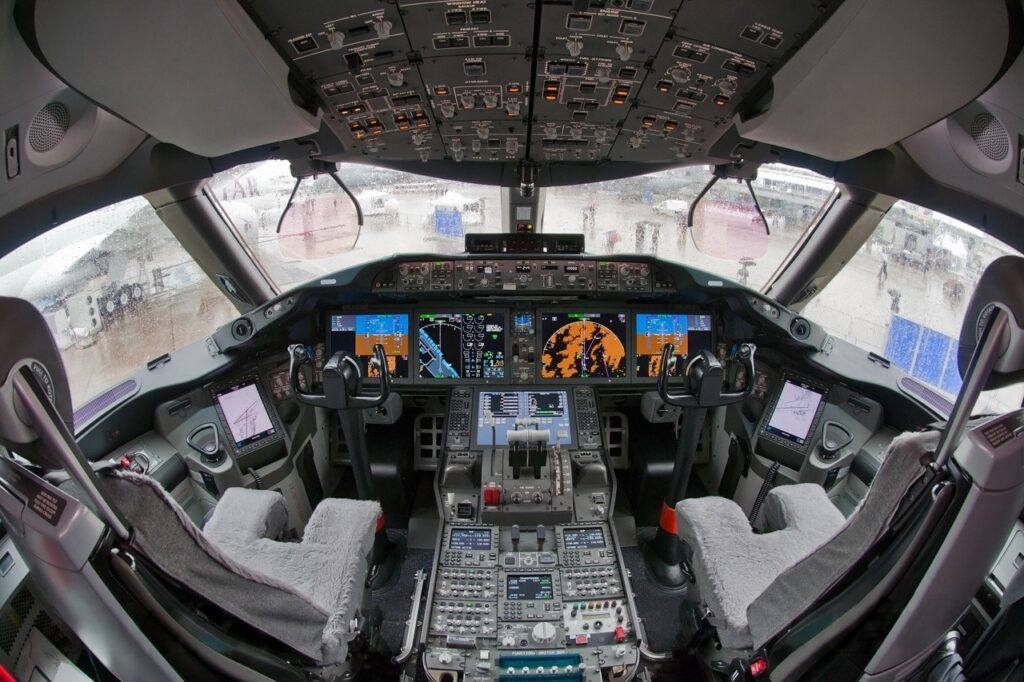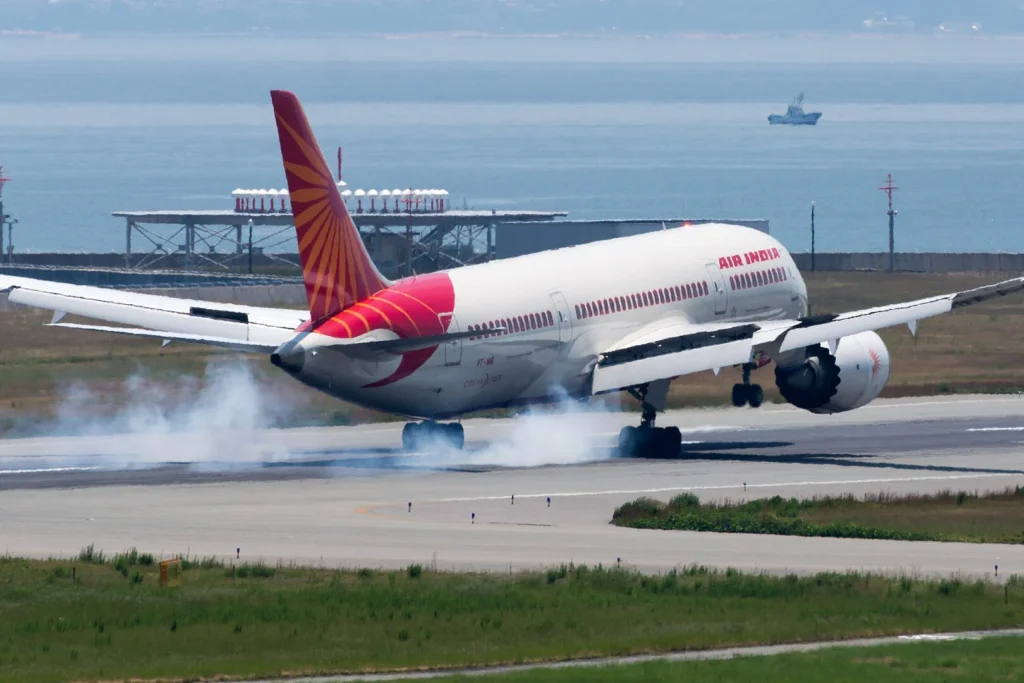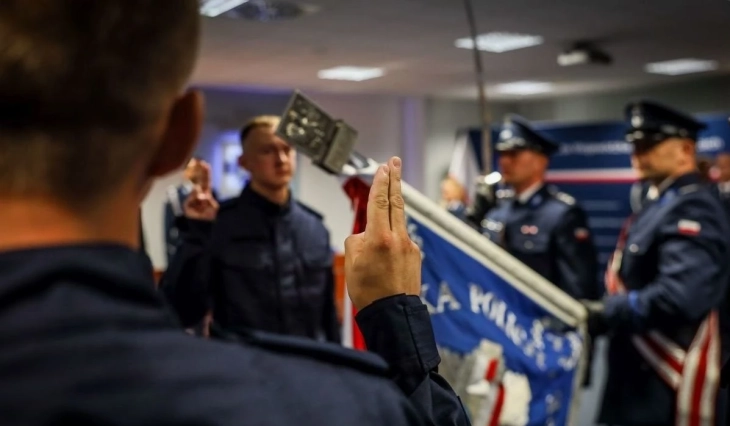
MUMBAI— A tragic crash involving Air India (AI) Flight 171 has led to intense scrutiny over cockpit control reliability after both engine fuel control switches unexpectedly moved to “CUTOFF” shortly after takeoff from Ahmedabad Airport (AMD), resulting in a dual engine failure.
The Boeing 787-8 Dreamliner crashed seconds after departure, triggering an industry-wide debate. As investigators probe deeper, the central question emerges: Can fuel control switches shift without pilot intent?
 Photo: Photo: avgeekwithlens/ Harsh Tekriwal
Photo: Photo: avgeekwithlens/ Harsh TekriwalAir India 787 Crash Due to Faulty Fuel Switches?
Aviation experts and regulators are reevaluating long-standing assumptions about fuel switch safeguards, spurred by cockpit voice recordings where one pilot exclaimed, “Why did you cut off the fuel?” and the other replied, “I didn’t.” This has broadened the investigation beyond pilot error.
Preliminary findings and ongoing inquiries are focusing on three main areas—mechanical flaws, electrical anomalies, and flight environment factors—each potentially capable of triggering unintended switch movement.
In 2018, the U.S. Federal Aviation Administration (FAA) released a Special Airworthiness Information Bulletin (SAIB) warning of a defect in certain fuel control switch lock mechanisms. The Boeing 787-8, the same model used on AI171, was specifically cited.
The bulletin highlighted a scenario in which the spring-loaded fuel switches, normally requiring a deliberate lift-and-shift motion protected by guard rails, could be toggled more easily if the locking mechanism disengaged. Under such a condition, a switch could be inadvertently moved, even without pilot input.
Despite the known advisory, Air India (AI) did not implement corrective actions, since the FAA guidance was not mandatory. In light of the crash, this inaction is now under regulatory scrutiny.
 Photo: By Alex Beltyukov – http://www.airliners.net/photo/Boeing/Boeing-787-8-Dreamliner/1940205/L/, CC BY-SA 3.0, https://commons.wikimedia.org/w/index.php?curid=20304402
Photo: By Alex Beltyukov – http://www.airliners.net/photo/Boeing/Boeing-787-8-Dreamliner/1940205/L/, CC BY-SA 3.0, https://commons.wikimedia.org/w/index.php?curid=20304402Electronic Control Unit and Throttle Module Under Review
Another angle of the investigation centers on the Electronic Control Unit (ECU) and the throttle control module—systems that interpret engine commands and regulate fuel flow. A microprocessor failure, sensor fault, or software bug could theoretically instruct both fuel switches to move to “CUTOFF” without human action.
Notably, flight data shows the cockpit’s automated systems attempted to restart the engines, indicating the system detected the failure and responded. However, the aircraft had insufficient altitude to recover.
This possibility brings into focus the vulnerability of critical cockpit systems to latent electronic or software failures, especially in aircraft where automation is heavily integrated into engine operations.
Vibration-Induced Switch Movement: A Rare but Noted Risk
Investigators are also exploring the role of takeoff turbulence or vibration. Although extremely rare, abrupt jolts during takeoff—combined with a compromised switch lock—could dislodge the switch from “RUN” to “CUTOFF.”
While such an occurrence is considered unlikely, aviation maintenance records and wear assessments are being evaluated.
The fact that both switches were later discovered in the “RUN” position suggests that the crew attempted an emergency response, but the aircraft was already below recovery altitude.
Can Both Switches Move Accidentally?
Seasoned pilots insist that the simultaneous unintentional movement of both fuel control switches is “virtually impossible” due to the robust design of stop locks and guards.
However, the FAA and other regulators have acknowledged that mechanical wear, vibration exposure, or inadequate maintenance could reduce their effectiveness.
The possibility that system design flaws may allow such a sequence of events—even in rare conditions—is now a focal point for global aviation authorities.
 Photo: By lasta29 – Air India, B787-8 Dreamliner, VT-ANR, CC BY 2.0, https://commons.wikimedia.org/w/index.php?curid=40687689
Photo: By lasta29 – Air India, B787-8 Dreamliner, VT-ANR, CC BY 2.0, https://commons.wikimedia.org/w/index.php?curid=40687689Repercussions for Global Cockpit Safety Protocols
The AI171 crash has prompted a renewed push from regulatory agencies, manufacturers, and airlines to audit existing cockpit safety measures, particularly those once considered infallible.
Boeing, alongside international safety boards, is expected to reexamine its cockpit interface policies and advise updated maintenance protocols.
Until the final investigation report is published, no conclusive fault can be assigned. Still, the incident raises valid concerns over system redundancies and the adequacy of safeguards designed to prevent fatal control inputs, whether by human or machine.
Stay tuned with us. Further, follow us on social media for the latest updates.
Join us on Telegram Group for the Latest Aviation Updates. Subsequently, follow us on Google News
Air India 787 Crash Preliminary Report: Pilot Error Suspected in Engine Shutdown
The post If Air India 787 Pilot Did Not Move Fuel Switches, Then Is it Boeing’s Fault? appeared first on Aviation A2Z.


















